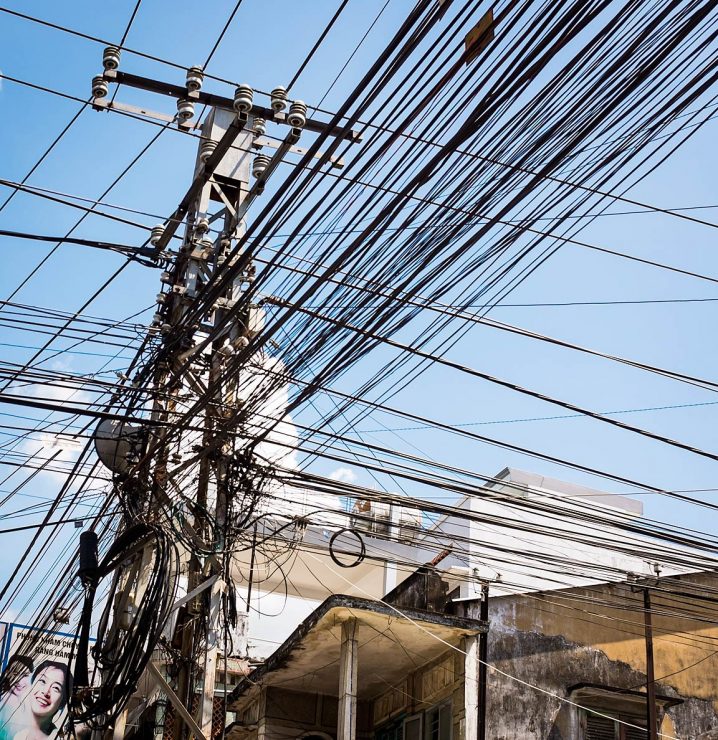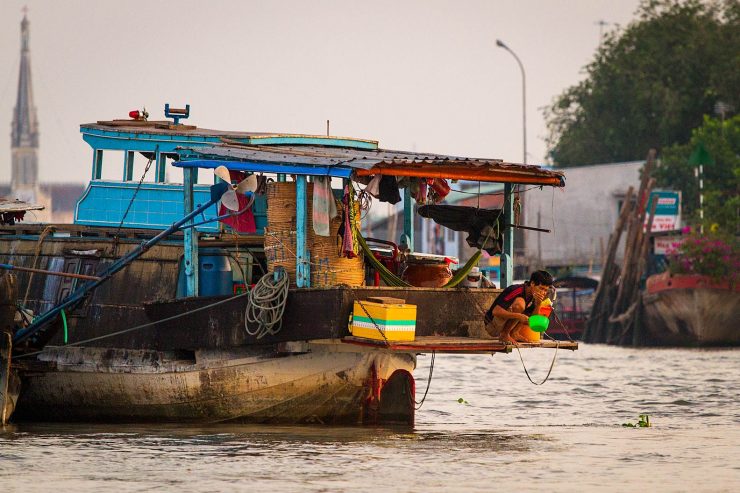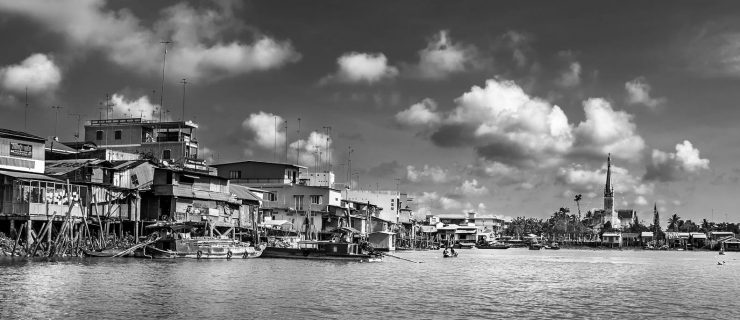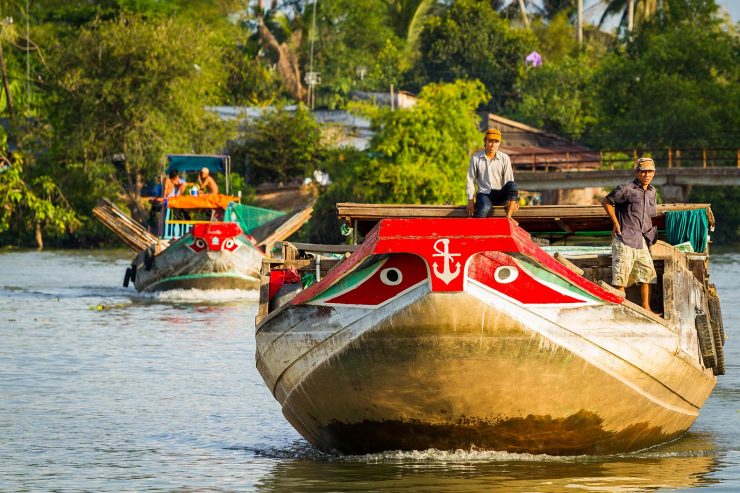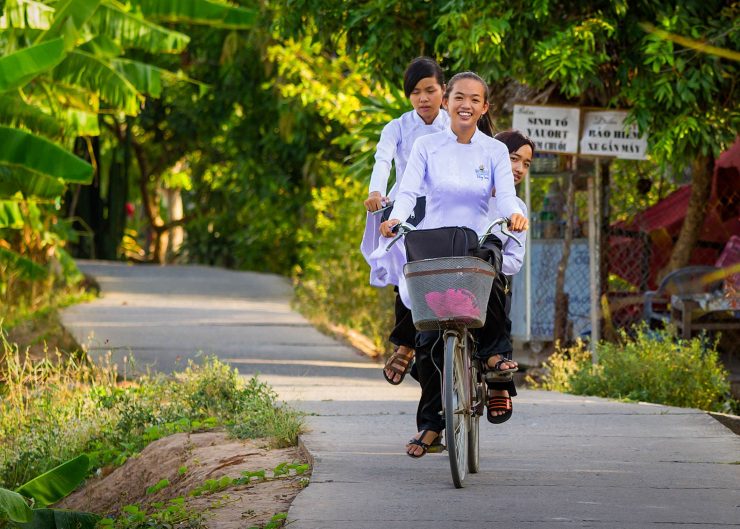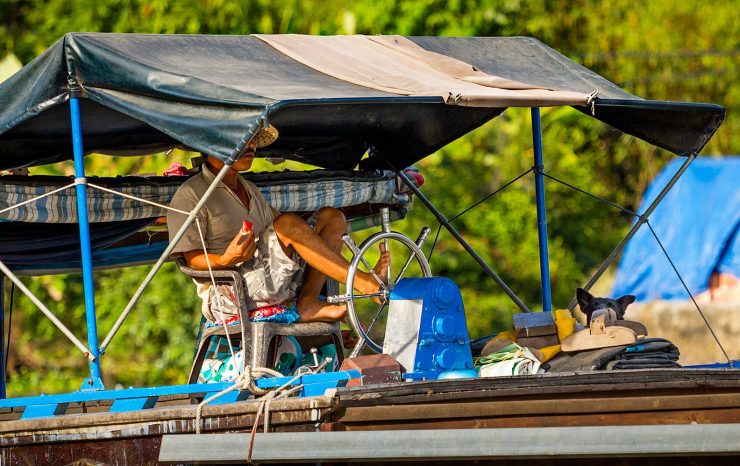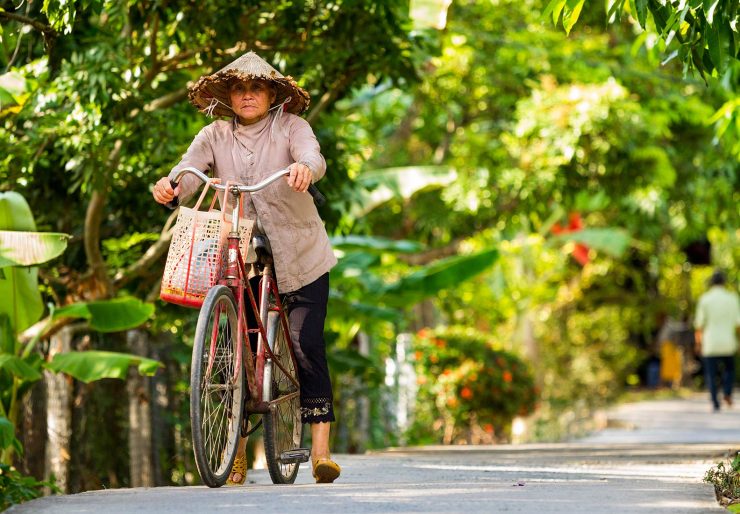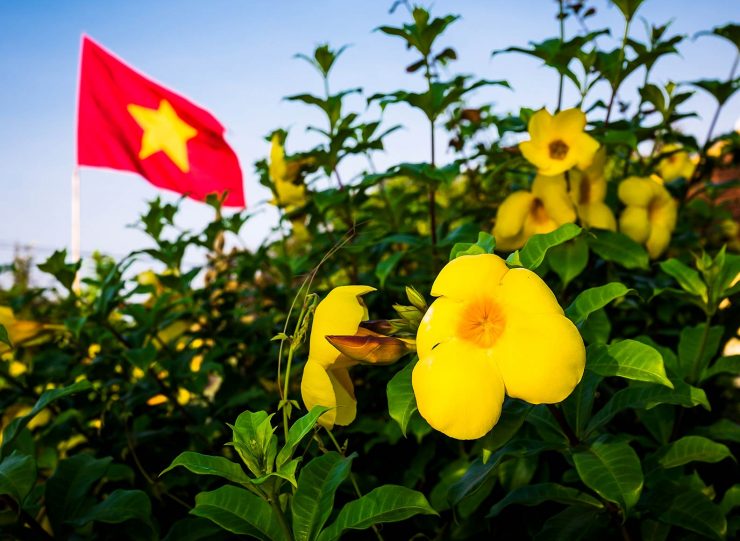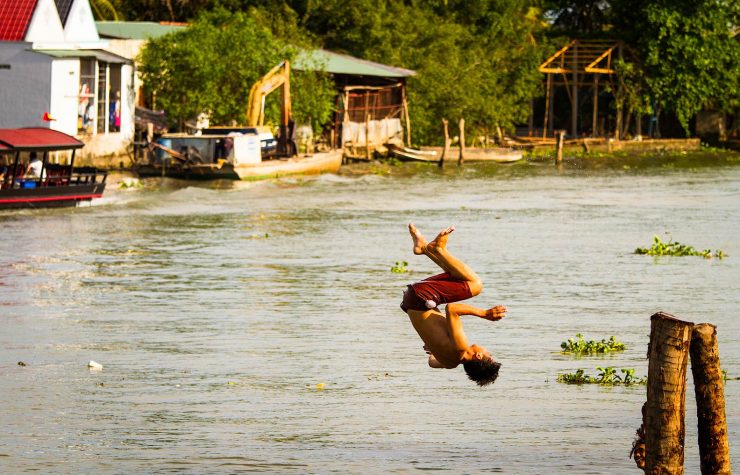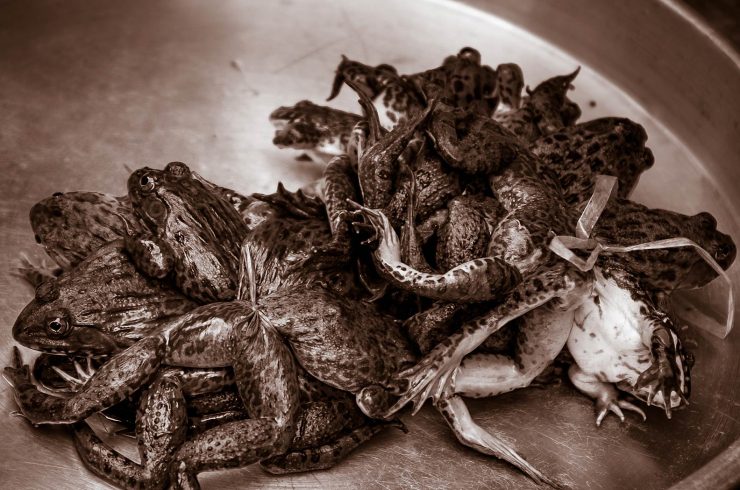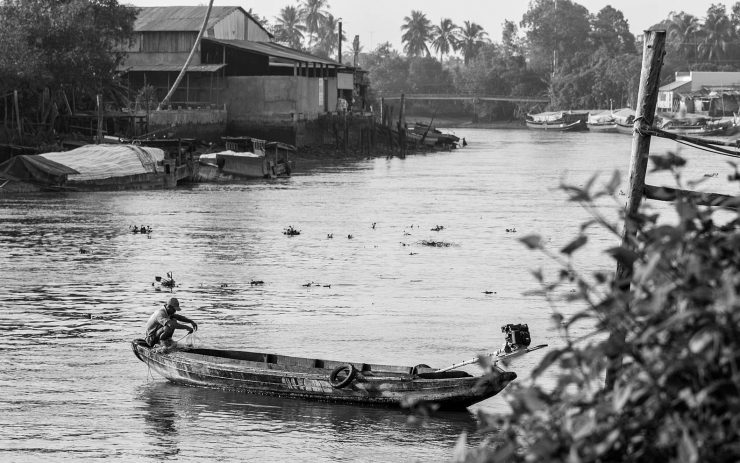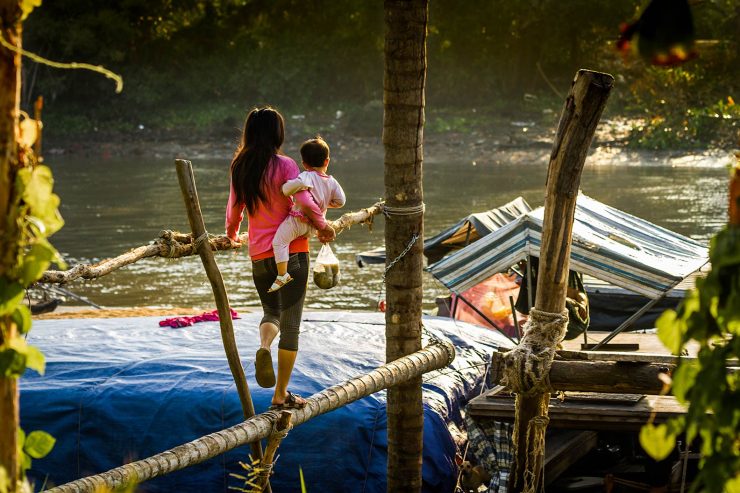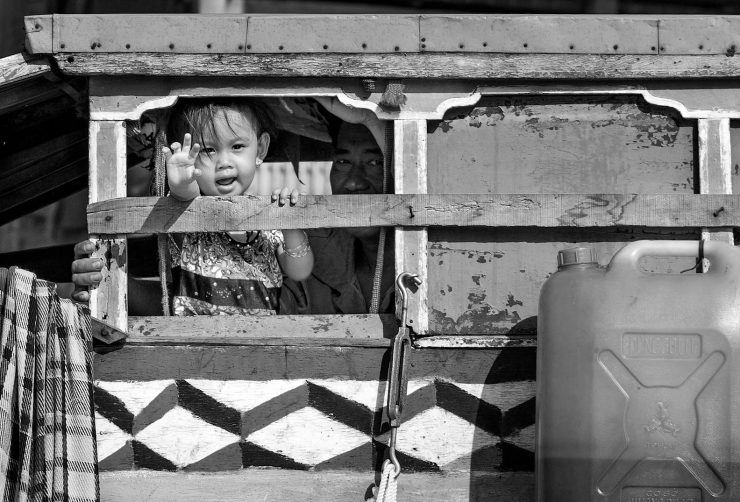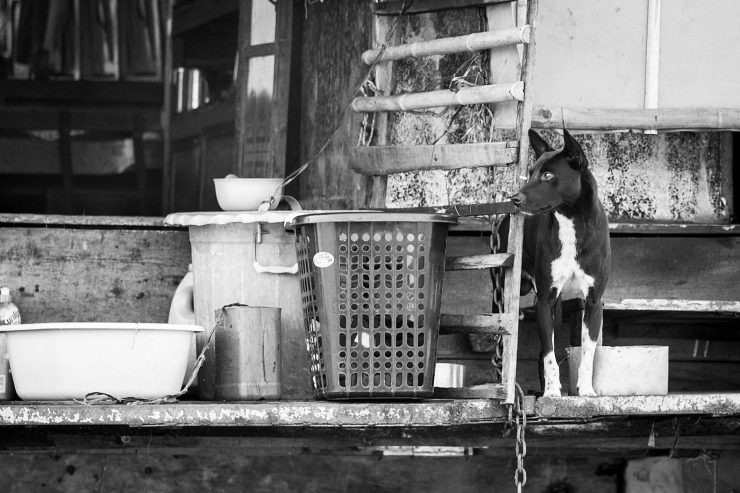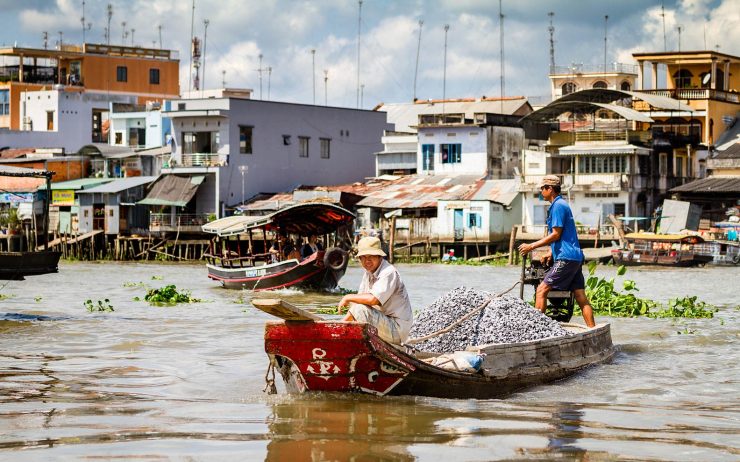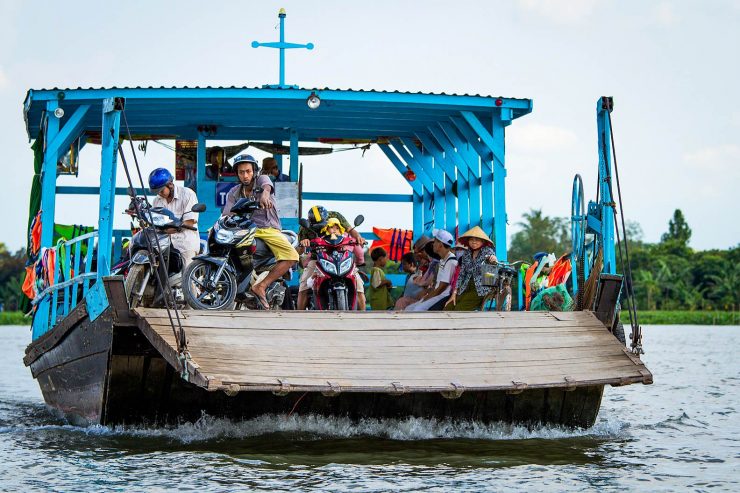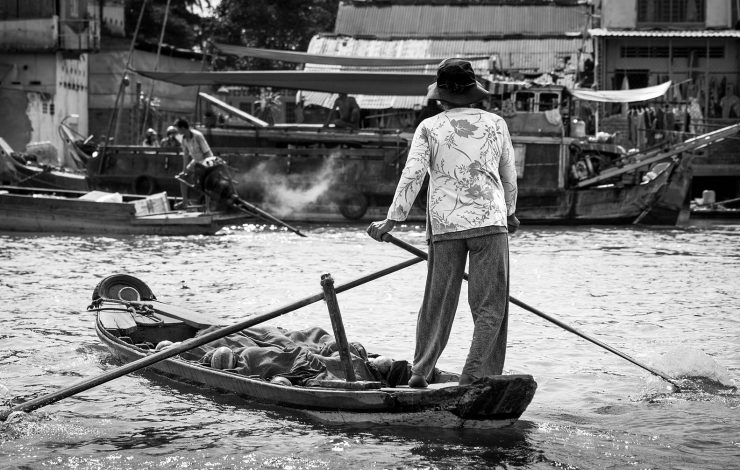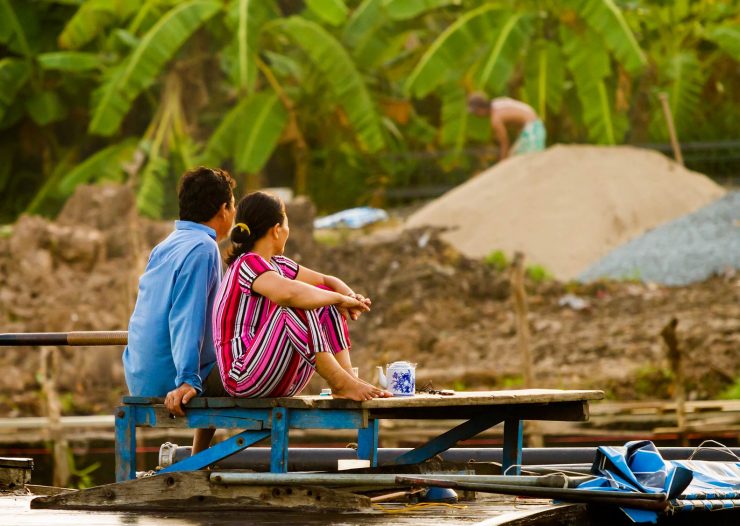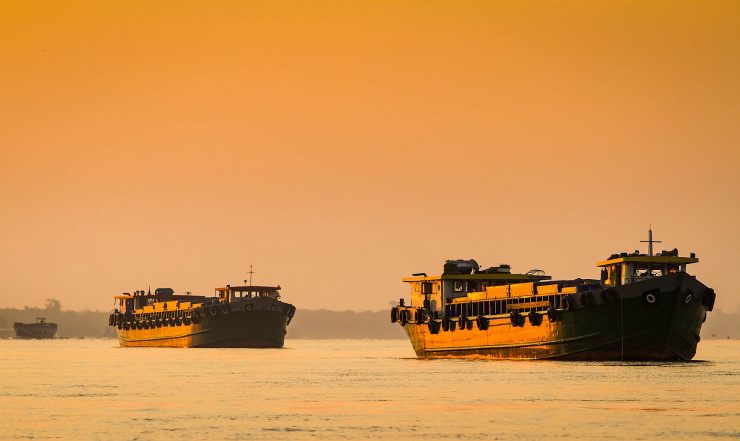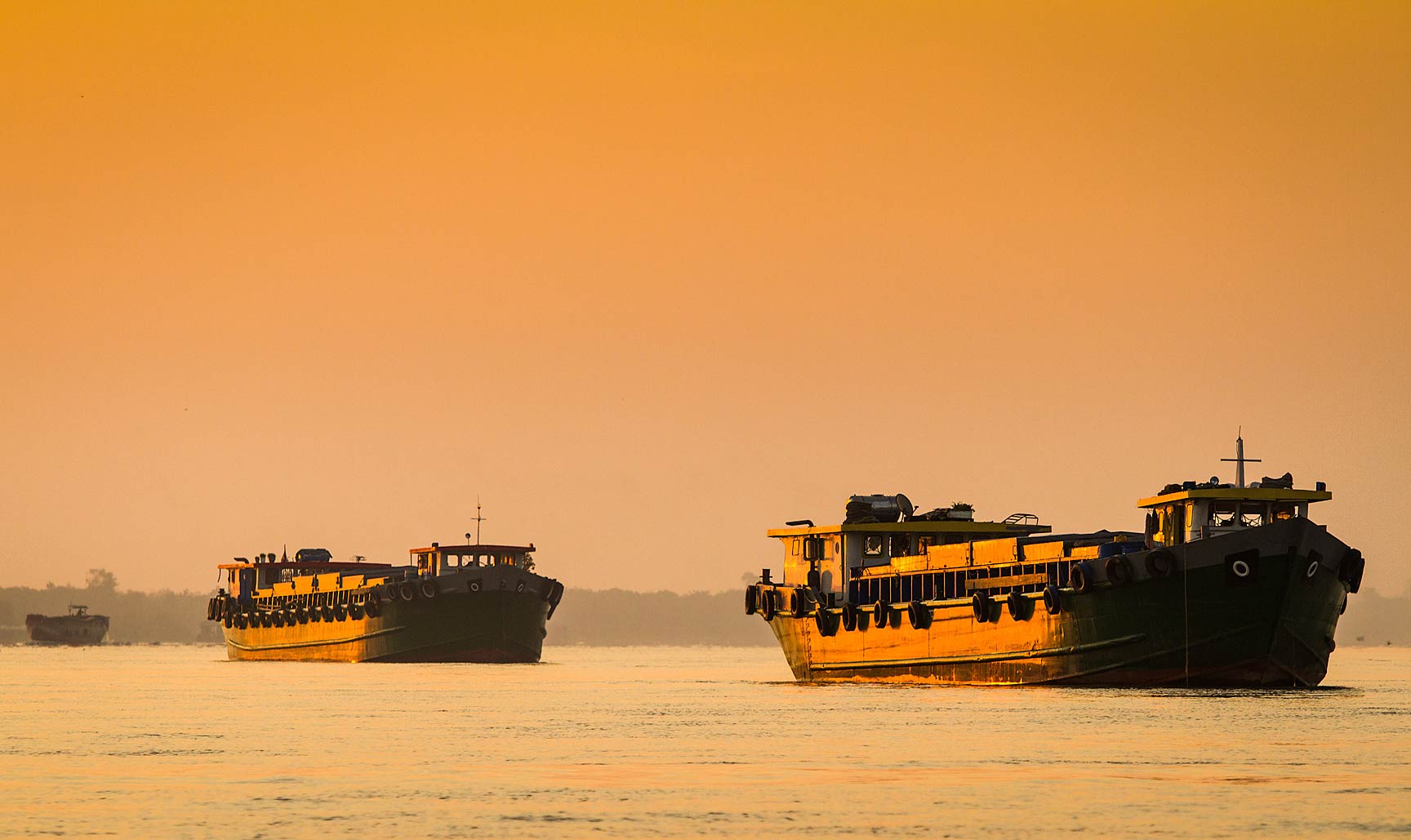It’s Friday, 5:20AM, and the sun is about to rise on the Mekong Delta at the southern tip of Vietnam. The first two alarms on my phone do not succeed in getting me out of bed, but the third one does the trick. This is one of only two opportunities I’m going to get to see the sunrise over the river on this trip, and who knows the next time I will have a chance to get back here.
I step out of bed onto the cool tile floor, and go about gathering the gear I had prepared the night before. I try to be quiet and avoid turning on any lights so as not to wake the rest of my family, who think I’m a little insane for waking up at this hour when “the river is going to be there all day to take pictures of.” Still, I’m excited to get out there.
Shoes, baseball cap and sunglasses: check. Water bottle and cashews: check. Mesh, many-pocketed vest containing polarizing filter, memory cards, mini-tripod, and extra batteries: check.
Cameras: check. But no extra lenses. For this trip I am trying something new by using one lens exclusively on the trusty Canon 7D (the 70-200 zoom). For everything else, I will be using my new Fuji X100s. I can’t wait to get started!
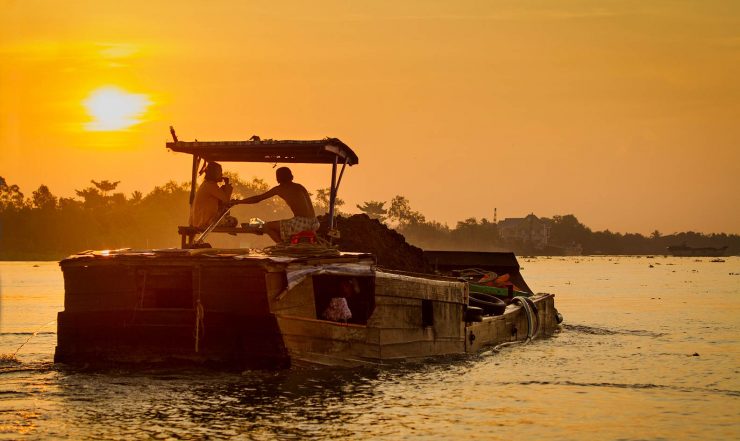
As I leave room and gently close the door, the heat and humidity hit me. The AC in the room was not terribly cold, but still, stepping outside is a shock. The sun hasn’t come up yet and it must be at least 90 degrees already. But nevermind that, I can see the sky turning a beautiful purple, and make my way out to the pier on the bank of the river and start taking pictures.
I eagerly examine the first few images. The results suggest that a bright pinkish-purple balloon has somehow been placed about an inch in front of the lens. Water condensation. In my excitement to get out there, I had taken the cameras directly from a cold, dry, air-conditioned room into what was essentially a tropical swamp. I tentatively try wiping the fogged lenses, but its no use; they instantly fog up again each time.
Unfortunately for me, this is one of those sunrises that looks spectacular for a few minutes, and then quickly dissipates into nothing special. And I had missed it. I had missed one of only two chances I was going to get on this trip, all because I forgot a basic lesson about tropical weather photography.
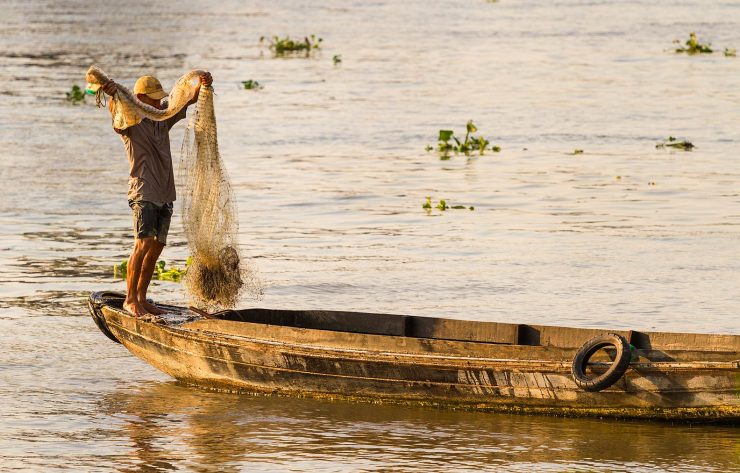
The next morning, I did it differently. I woke up at the first alarm, and immediately set my two cameras outside of the door to our room. (The rooms at the B&B at which we were staying opened straight into the outdoor courtyard.) The 7D was zipped snuggly into my padded (i.e. insulated) backpack, and the X100s was also sealed in a ziploc bag filled with de-humidified indoor air. I then went back to bed and waited for the back-up alarms before getting up again and heading out.
The result? Well, both lenses actually fogged up again (probably because I didn’t give them quite enough time to warm up), but it wasn’t nearly so bad, and they were both usable again very quickly. At least I didn’t miss the second sunrise.
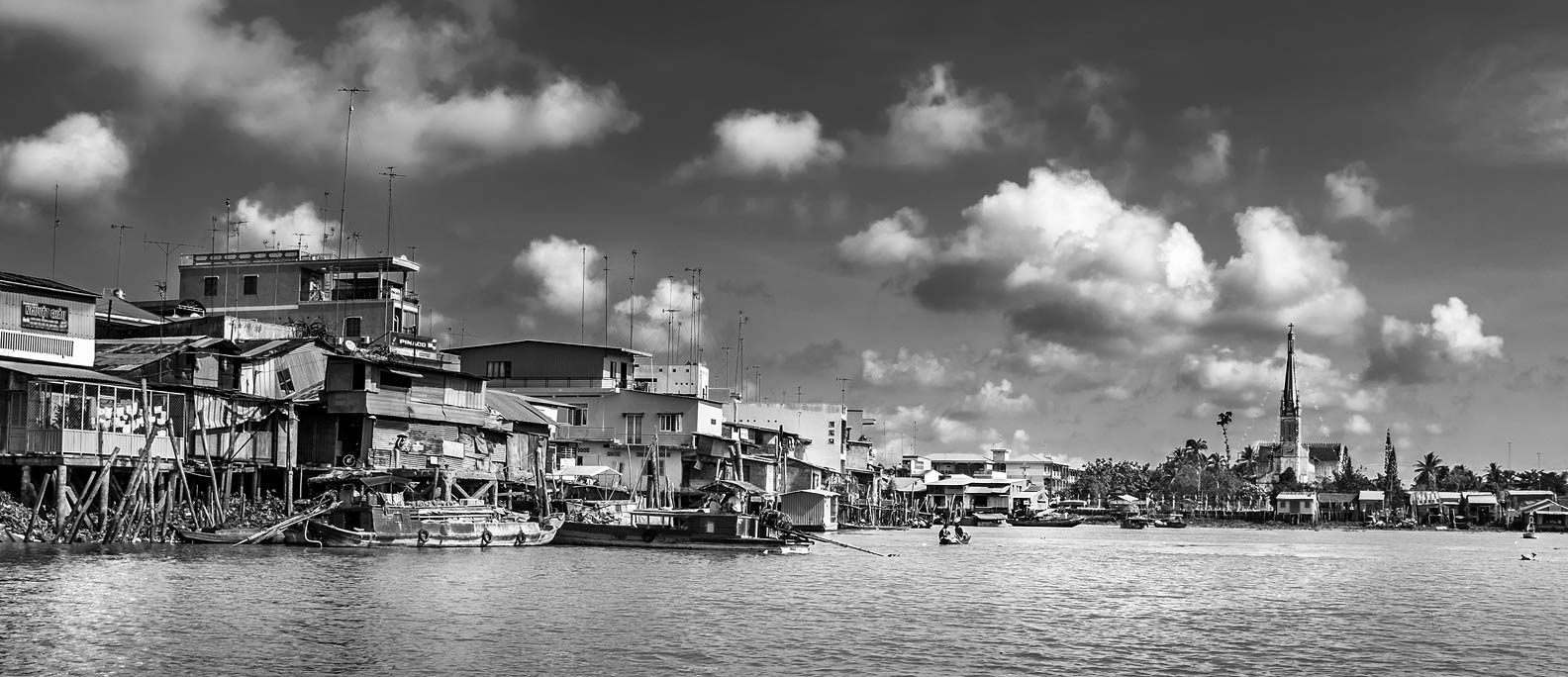
Set out below is a small selection of photos I took during those couple of days in the delta. With the exception of the above mishap I did not experience any other equipment issues, and enjoyed two days of amazing scenery and colorful subjects for photographs. Overall I was also satisfied with my decision not to bring a wide-angle zoom or any other additional lenses for the SLR. I was never bothered at all by the midrange focal length “gap” between the 23mm (approximately 35mm equivalent) lens on the X100S and the 70mm (approximately 110mm) telephoto on the Canon 7D. There were times when I would have liked to have wider lens, but this didn’t happen often, and I have a feeling that the telephoto+rangefinder combination I will be my preferred set-up the next time I am lucky enough to take a similar trip.
